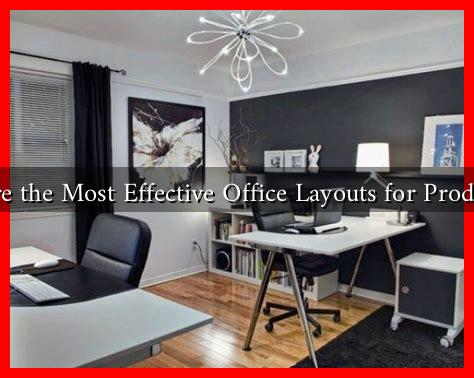-
Table of Contents
What Are the Most Effective Office Layouts for Productivity?
In today’s fast-paced work environment, the layout of an office can significantly impact employee productivity, collaboration, and overall job satisfaction. As companies strive to create spaces that foster creativity and efficiency, understanding the most effective office layouts becomes crucial. This article explores various office layouts, their benefits, and how they can enhance productivity.
The Importance of Office Layout
Office layout refers to the arrangement of furniture, equipment, and workspaces within an office. A well-thought-out layout can lead to improved communication, reduced distractions, and a more comfortable working environment. According to a study by the International Journal of Environmental Research and Public Health, office design can influence employee performance by up to 20%. Here are some key factors that make office layout important:
- Collaboration: Open spaces encourage teamwork and communication.
- Focus: Private areas help employees concentrate on tasks without interruptions.
- Flexibility: Adaptable layouts can accommodate changing team sizes and project needs.
Popular Office Layouts
There are several office layouts that organizations can adopt, each with its unique advantages and challenges. Here are some of the most effective layouts:
1. Open Office Layout
The open office layout is characterized by large, open spaces with minimal barriers between workstations. This design promotes collaboration and communication among employees. Companies like Google and Facebook have successfully implemented open office designs to foster creativity and teamwork.
- Pros: Enhanced collaboration, cost-effective, and easy to reconfigure.
- Cons: Increased noise levels, potential distractions, and lack of privacy.
2. Cubicle Layout
Cubicles provide employees with a degree of privacy while still allowing for some level of interaction. This layout is common in many corporate environments, offering a balance between collaboration and focus. Companies like IBM have utilized cubicle layouts to create semi-private workspaces.
- Pros: Reduced noise, personal space, and defined work areas.
- Cons: Can feel isolating, limited collaboration opportunities.
3. Activity-Based Working (ABW)
Activity-Based Working is a flexible office layout that allows employees to choose their workspace based on the task at hand. This approach encourages mobility and adaptability, catering to different work styles. Companies like Deloitte have adopted ABW to enhance employee satisfaction and productivity.
- Pros: Increased flexibility, tailored work environments, and improved employee engagement.
- Cons: Requires a cultural shift, potential for confusion in workspace usage.
4. Hybrid Layout
The hybrid layout combines elements of open offices, cubicles, and collaborative spaces. This design allows for a mix of private and communal areas, catering to various work preferences. Organizations like Microsoft have embraced hybrid layouts to support diverse work styles.
- Pros: Balances collaboration and focus, adaptable to team needs.
- Cons: Can be complex to design, may require more space.
Case Studies and Statistics
Research shows that the right office layout can lead to significant improvements in productivity. A study by the University of Exeter found that employees in well-designed offices were 32% more productive than those in poorly designed spaces. Additionally, a survey by Steelcase revealed that 86% of employees prefer a mix of collaborative and private spaces.
Companies like Zappos have reported increased employee satisfaction and retention rates after redesigning their office layouts to promote collaboration and creativity. These examples highlight the importance of investing in effective office design.
Conclusion
Choosing the right office layout is essential for fostering productivity and employee satisfaction. Whether opting for an open office, cubicles, activity-based working, or a hybrid approach, organizations must consider their unique needs and culture. By understanding the benefits and challenges of each layout, companies can create environments that enhance collaboration, focus, and overall productivity.
In summary, the most effective office layouts are those that align with the organization’s goals and the preferences of its employees. As the workplace continues to evolve, staying informed about design trends and employee needs will be crucial for maintaining a productive workforce.
For more insights on office design and productivity, you can visit Steelcase’s research articles.


